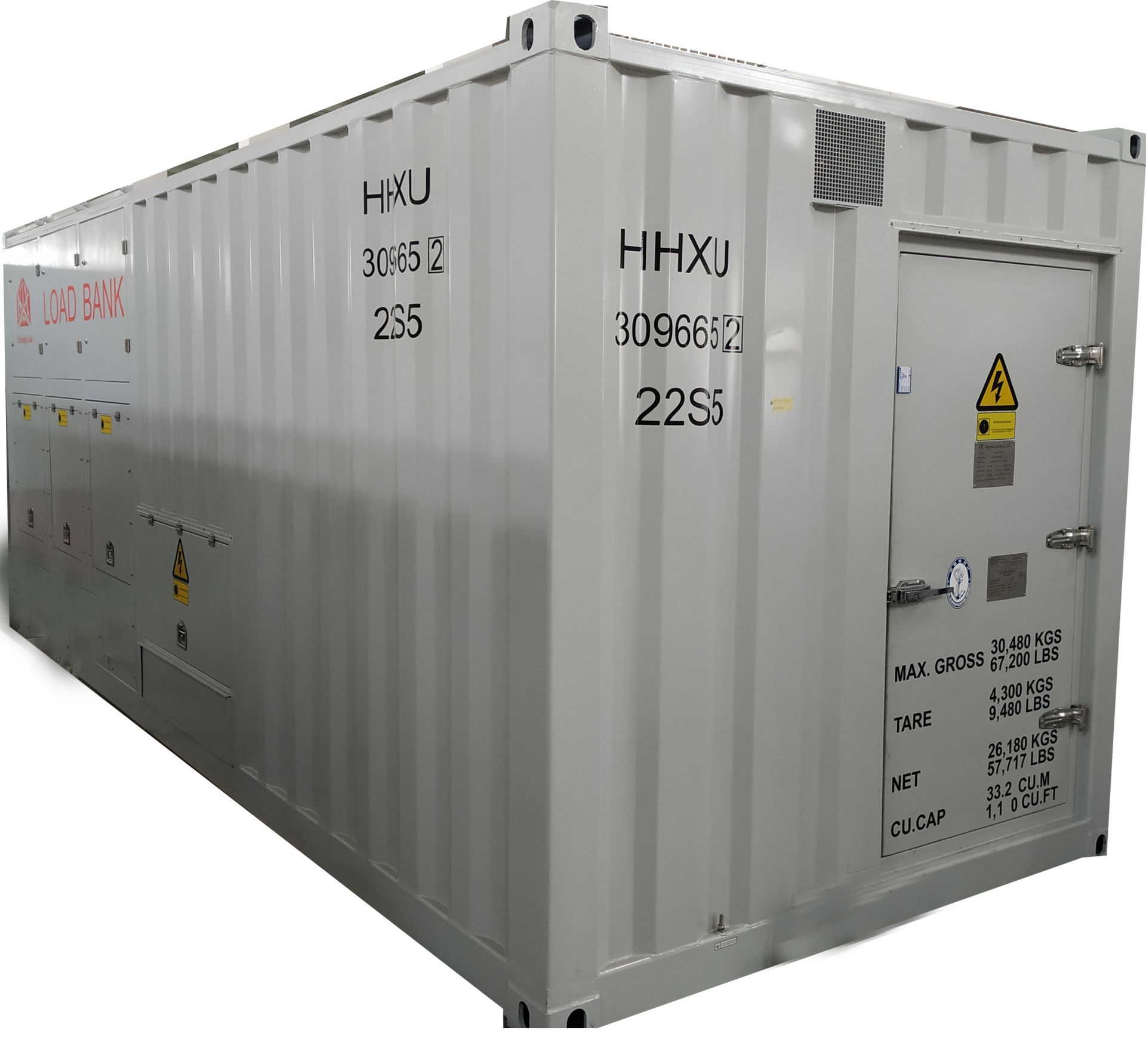Requirements for Load Bank Testing of Generators Used in Coal Mines
Time:2024-08-20
In coal mine production, generators serve as core electrical equipment, and their stability and reliability are directly related to the safe operation and production efficiency of the mine. To ensure that generators can provide stable power supply under various working conditions, regular load bank testing is particularly important. This article will delve into the requirements for load bank testing of generators used in coal mines, covering testing objectives, technical requirements, operational steps, and precautions.
2MW load bank
I. Testing Objectives
The primary objective of generator load bank testing is to verify its performance under different load conditions to ensure reliability and stability in actual use. Specifically, through load bank testing, the generator's maximum load capacity can be confirmed, its performance stability under different environmental conditions can be evaluated, and potential fault hazards can be identified and resolved promptly, thereby avoiding work interruptions and property losses caused by equipment failures.
II. Technical Requirements
1. Accuracy of Testing Equipment
It is crucial to choose high-precision instruments and equipment for load bank testing. The testing instruments need to have good stability and high sensitivity, capable of real-time monitoring of the generator's output voltage, current, and power parameters to ensure the accuracy of test results.
2. Safety of Testing Environment
The load bank testing site should strictly comply with safety standards and be equipped with necessary protective facilities such as security fences and fire protection systems. Additionally, relevant safety warning signs should be placed to ensure the safety of personnel and equipment during the testing process.
3. Rationality of Load Configuration
For generators of different types and rated powers, the load bank should be configured rationally. Load bank configuration is divided into static and dynamic loads, and a reasonable load structure can better simulate the generator's operation during actual use. Ensure that the load bank is connected correctly and safely to the generator, avoiding uneven load distribution that may lead to voltage instability or equipment damage.
4. Standardization of Testing Methods
During the load bank testing process, industry standards and specified testing methods should be followed. Choose appropriate testing methods based on actual needs to ensure the validity of test results. Before testing, the generator should be thoroughly inspected to ensure it is in good condition; during testing, the load should be increased gradually, and the generator's output parameters should be monitored and recorded in real-time.
III. Operational Steps
1. Pre-Test Preparation
Ensure that the generator and testing equipment are in good working condition, and check if the generator's power supply and fuel supply are normal.
Pre-inspect the load bank equipment to confirm its functionality.
Ensure the testing environment is safe and shut down all equipment and functions that may affect the testing.
2. Determine the Test Load
Determine the type and size of the test load based on the generator's rated power and actual requirements, specifying the current, voltage, and power requirements of the test load.
3. Perform Load Bank Testing
Connect the test load to the generator's output port and start the generator.
Gradually increase the load, observe changes in the generator's output voltage and current, and ensure the equipment can operate smoothly.
Use voltmeters and ammeters to record the generator's output parameters under different loads, noting any abnormalities or instabilities.
4. Record and Analyze Data
Record various parameter changes during the testing process in real-time, and organize and analyze the data after testing.
Evaluate the generator's performance and stability, comparing the generator's performance under different load conditions.
5. Post-Test Maintenance and Reporting
After testing, conduct a comprehensive inspection and cleanup of the generator and load bank equipment.
Write a detailed test report, including test conditions, test data, observed phenomena, and recommended subsequent actions.
IV. Precautions
1. Safe Operation
When connecting the generator set and load bank, ensure the safe connection of power and load lines to avoid hazards such as electric shock and short circuits. Wear appropriate personal protective equipment to ensure a safe testing environment.
2. Temperature Monitoring
During long-duration load bank testing, constantly monitor the temperature of the generator set and load bank to ensure the equipment does not damage due to overheating. Ensure the generator has sufficient ventilation.
3. Load Balancing
Ensure the load bank's load is balanced to avoid voltage instability or generator set damage caused by uneven load distribution. Use appropriate cables and connectors to ensure even load distribution.
4. Overload Protection
During load bank testing, ensure that the load bank's maximum carrying capacity is not exceeded to avoid equipment damage due to overload. Implement overload protection mechanisms and take prompt measures to address abnormal situations
News Recommendation
-
 2024-09-11
2024-09-11TRIUMPH LOAD EXHIBITING AT Enlit Europe 2024 -BOOTH 7.H08
-
 2023-04-21
2023-04-21TRIUMPH LOAD EXHIBITING AT DATA CENTER WORLD GERMANY 2023-BOOTH F909
-
 2023-04-06
2023-04-06TRIUMPH LOAD EXHIBITING AT ELECTRIC POWER TECH KOREA 2023 – Booth G109
-
 2022-05-05
2022-05-05What is the role of ac load bank for power supply?
-
 2022-05-05
2022-05-05What is the role of the load bank?


